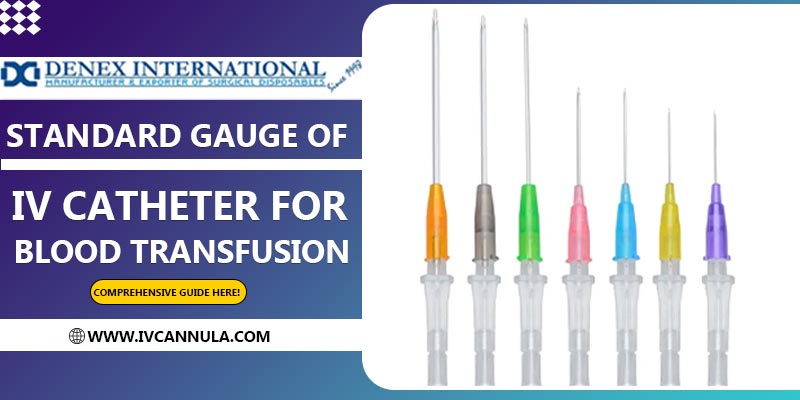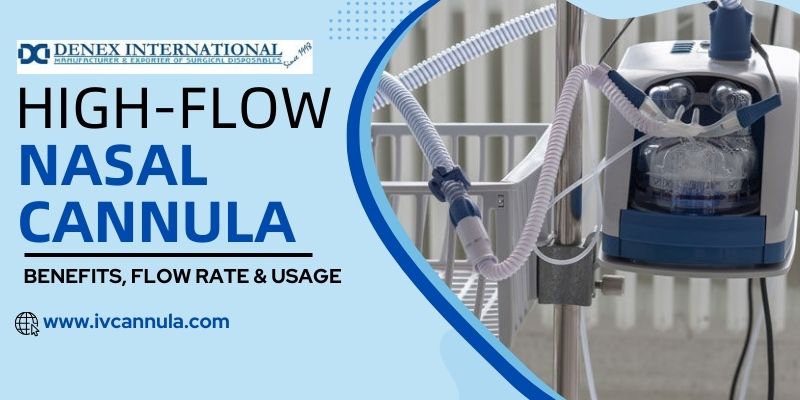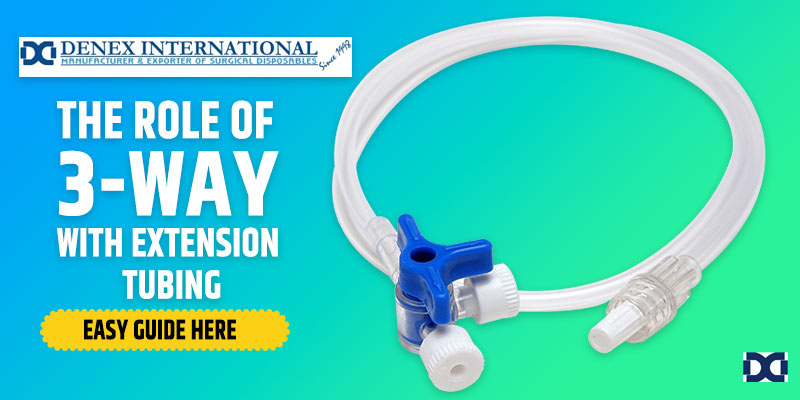In the intricate world of medical devices, the choice of the right intravenous (IV) catheter for blood transfusion plays a pivotal role in ensuring patient safety and optimal healthcare outcomes. Denex International, a leading IV catheter manufacturer, understands the critical importance of selecting the appropriate standard gauge for these devices. In this comprehensive guide, we will delve into the nuances of the standard gauge of IV catheters for blood transfusion, exploring the significance, selection criteria, and the advancements made by Denex International in this field.
Understanding the Basics: What is a Standard Gauge of IV Catheter?
The standard gauge of an IV catheter refers to the thickness or diameter of the catheter needle. The gauge is denoted by a numerical value, with a lower number indicating a larger diameter and a higher number indicating a smaller diameter. For blood transfusions, the choice of the standard gauge is crucial as it directly influences the flow rate, ease of insertion, and the potential for complications.
The selection of the standard gauge for IV catheters in blood transfusions, particularly the widely accepted practice of opting for a 20-gauge or larger catheter(18-gauge) in adult patients, raises intriguing questions about the underlying evidence supporting this norm. While it has become a common approach to ensure safe and effective blood transfusions, the need for a deeper understanding of the empirical basis is evident. At the crossroads of medical practice and evidence-based care, this accepted convention prompts a closer examination of the available data and clinical outcomes.
Significance of Choosing the Right Standard Gauge of IV Catheter
Flow Rate and Viscosity: The gauge of the IV catheter significantly affects the flow rate of fluids, including blood during transfusions. Larger gauge needles allow for a faster flow rate, making them suitable for situations where a quick transfusion is required. Conversely, smaller gauge needles are appropriate for situations where a slower, controlled flow is necessary.
Patient Comfort: The size of the catheter needle also impacts patient comfort during insertion. Smaller gauge needles are often associated with less pain and discomfort, making them preferable for patients with delicate veins or those requiring extended IV therapy.
Vein Integrity: Selecting the appropriate standard gauge is crucial for maintaining vein integrity. Using a needle with a diameter too large for the vein can cause trauma and increase the risk of complications such as infiltration or phlebitis.
Selection Criteria for Standard Gauge of IV Catheter for Blood Transfusion
Patient Population: The choice of standard gauge should consider the specific needs of the patient population. Pediatric patients, for example, may require smaller gauge catheters to accommodate their smaller veins, while adults may benefit from a broader range of gauge options.
Type of Blood Product: Different blood products may have varying viscosity and flow characteristics. The standard gauge should be selected based on the specific requirements of the blood product being administered to ensure a smooth and efficient transfusion process.
Clinical Situation: Emergency situations may necessitate the use of larger gauge catheters to facilitate rapid blood transfusions. In contrast, routine transfusions may allow for the use of smaller gauge catheters to prioritize patient comfort and minimize complications.
Denex International’s Advancements in Standard Gauge IV Catheters
Denex International, a renowned IV catheter manufacturer, has been at the forefront of innovation in the healthcare industry. The company recognizes the evolving needs of medical professionals and patients, leading to the development of state-of-the-art standard gauge IV catheters for blood transfusion.
Range of Gauges: Denex International offers a comprehensive range of standard gauges to cater to diverse patient populations and clinical scenarios. This ensures that healthcare providers have the flexibility to choose the most suitable catheter for each unique situation.
Safety Features: Denex International prioritizes patient safety by incorporating advanced safety features into its IV catheters. These features include smooth insertion technology, catheter stabilization mechanisms, and options for safety-engineered devices, reducing the risk of complications during blood transfusions.
Research and Development: Denex International invests heavily in research and development to stay abreast of the latest advancements in IV catheter technology. This commitment to innovation ensures that healthcare professionals have access to cutting-edge devices that enhance patient care and streamline clinical processes.
Conclusion
In conclusion, the standard gauge of IV catheters for blood transfusion is a critical factor that directly influences patient outcomes. Denex International, as a leading IV catheter manufacturer, recognizes the importance of providing healthcare professionals with a diverse range of standard gauges, coupled with advanced safety features and continuous innovation.
Healthcare providers can trust Denex International to deliver high-quality IV catheters that meet the specific needs of their patients and clinical scenarios. By understanding the significance of standard gauge selection and staying informed about the latest advancements in IV catheter technology, healthcare professionals can ensure the delivery of safe, effective, and patient-centered blood transfusions.







